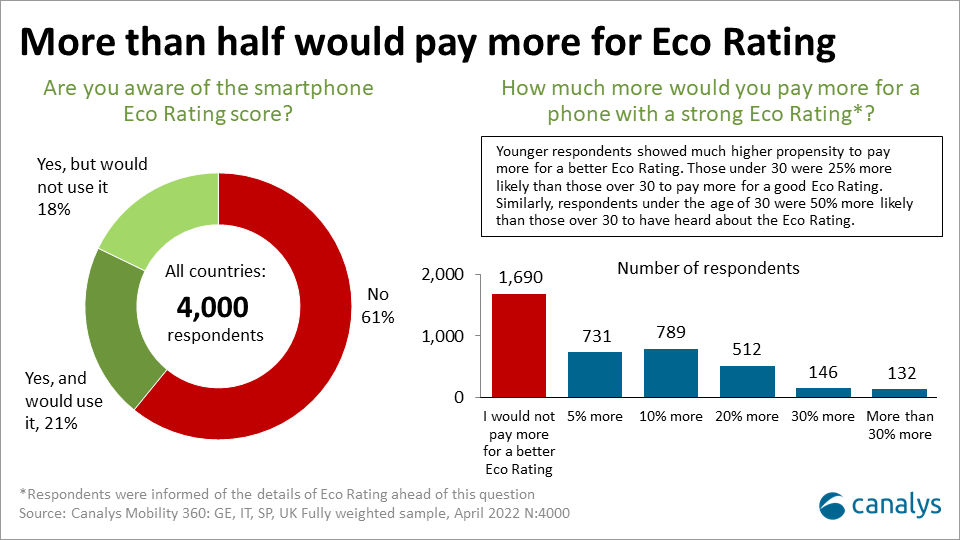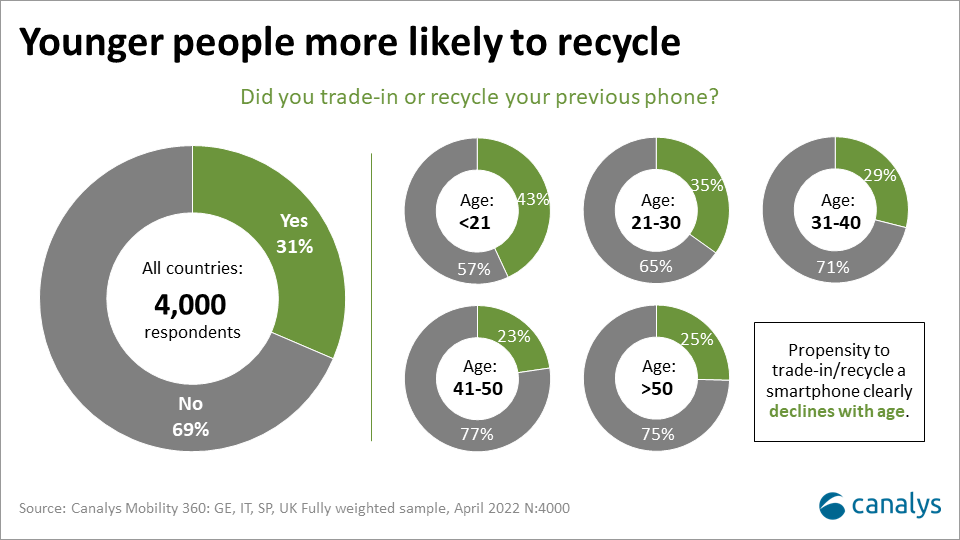WWDC 22: Apple’s new software updates highlight productivity
20 June 2022

With the launch of the Eco Rating initiative, leading global smartphone vendors and key European operators hoped to provide transparency on the environmental impact of producing, using, transporting and disposing of smartphones and feature phones. One year on, Canalys Consumer Research Survey asks consumers in key countries in Western Europe what they really think of the initiative.
Over a year has passed since the Eco Rating initiative was launched. Lead by Europe’s largest network operators in collaboration with 17 of the world’s largest smartphone OEMs, the Eco Rating set out to provide greater transparency into environmental credentials of phones including production, usage, transport, recycling, and disposal of devices.
During its first year, the Eco Rating has worked to improve collaboration between network operators and OEMs on environmental sustainability by clarifying requirements of devices. This mutual involvement on the Eco Rating from both operators and OEMs is a crucial step for the industry to kick start a circular model for devices, improve environmental credentials, and reduce the industry’s carbon footprint.
The Eco Rating’s focus towards consumers has, with a few exceptions, been missing since it was launched. Not surprisingly, Canalys’ latest Consumer Research Survey in Western Europe shows that only one out of three end-users had heard about the Eco Rating. Just half of these respondents stated they currently use or would use the Eco Rating in choosing a new device. The next step both network operators and smartphone OEMs now need to consider is whether to market the Eco Rating out to the mass audience to increase its usage, and if they do, to decide where and how they wish to position and market it.
The first question to ask is whether consumers would care enough about the Eco Rating to include it in their purchasing decision-making. Our latest Consumer Research Survey shows more than half the respondents stated they would consider paying more for a phone with a strong Eco Rating. However, most of this group would only be willing to pay a maximum of 10% extra for a strong score. Consequently, the direct monetizing potential for a large audience might be limited. Still, there is a smaller market segment who would be willing to pay 20-30% more for a strong Eco Rating. In this market segment, respondents under the age of 30 were overrepresented. In fact, respondents under the age of 30 were 25% more likely to show willingness to pay for an Eco Rating with a high score than those over 30. This correlated with Canalys’ findings that younger age groups are more aware about sustainability and have greater propensity to trade-in and recycle devices. Thus, finding marketing channels that reach this audience will be essential to increase the Eco Rating’s usage.

To appeal to other market segments, it will be critical to highlight features of the Eco Rating beyond the environmental factors that it is most known for. Topics such as expected device lifetime and robustness of the device may appeal stronger to these market segments. Having angles beyond just the environmental footprint will also reduce the likelihood of the rating being perceived as green washing.
It is still early days for the Eco Rating. Not only is it facing competition from other environmental scores, but its most critical limitation is the absence of Apple. Either way, creating awareness among consumers about the efforts network operators and OEMs are currently making is important to present an accurate picture of the industry’s shifts.
In the big picture, the Eco Rating is just the first stage towards building a more circular model for the phone industry. Sustainability credentials are not only about recycling and carbon footprint, but more about understanding how the lifetime of devices can be improved. With better phones that can last longer, more devices can be refurbished, reused, or recycled. Apple currently makes up most refurbished phones, and the Eco Rating can help push other OEMs in a similar direction.